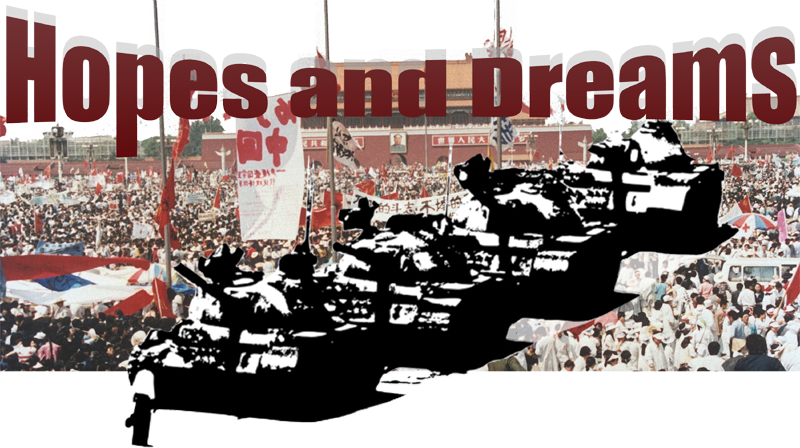

Beijing-Tiananmen
Massacre ’89
32 Years LaterThe
Sea of Humanity & Tiananmen Man
June
5, 2021 (or May 36, 2021)
Communist
dictatorships fear nonviolent demonstrations and mass protests, because
that's their origin story, and 1989 was a banner year for change. The Chinese
student and worker protests in May of 1989 were brutally
squashed in June of 1989, like people on bicycles under tanks.
Ancient
history? Hardly. The Chinese Communist
Party (CCP)
remains frightened of its people, of an uprising. On the anniversary of
the Tiananmen Square Massacre, a white-washing campaign has hit the
Internet to make records of the massacre harder to find.
But
not impossible.
Beijing
Massacre — Slide
1
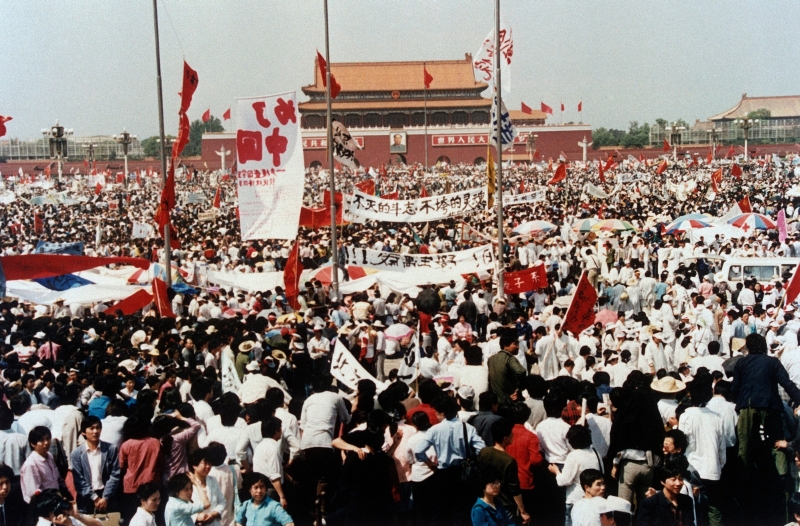
Students
gathered for pro-democracy reforms around China after the sudden death
of reformer Hu Yaobang. The largest student gathering was at Tiananmen
Square in smoggy Beijing. Tiananmen Square is
the largest
public space in the world, created on an inhuman scale. The monumental
public buildings that line the edges and the vast, treeless spaces in
between speak of the insignificance of the individual before the might
of the state. Fill it with protesters and the inhuman scale of Tiananmen
is tipped to a sea of humanity.
Beijing
Massacre — Slide
2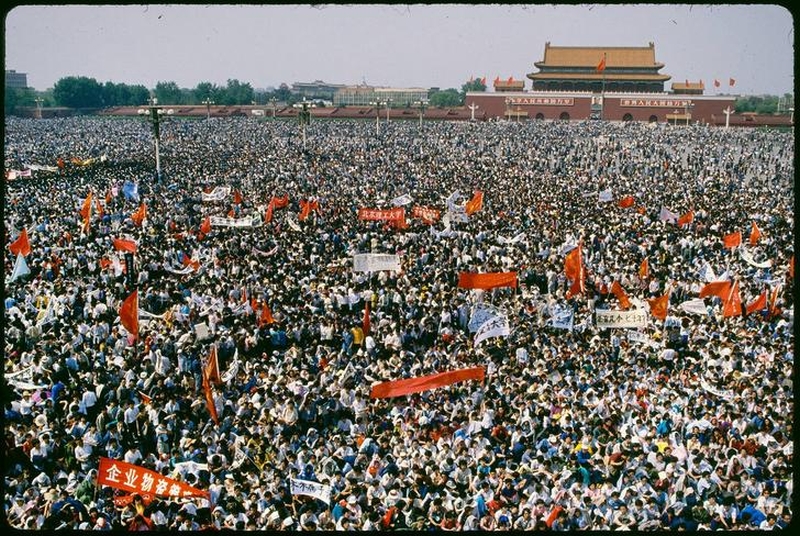 Reform
protesters gather in Tiananmen Square on May 4, 1989.
While the Chinese Communist Party (CCP) had silenced previous
demonstrations, the violent retaking of the square on June 4, 1989, was
so brutal that it has since become known as the Tiananmen Square
Massacre. It was a massacre, but nearly all of the
thousands of deaths occurred
outside the square itself and in other parts of the city. It could more
accurately be called the Beijing
Massacre but the symbol is Tiananmen
Square. We still don’t know how many
people died there, as the Chinese
government has done everything in its power to suppress and forget
about the activities that took place that day. The estimates are that a minimum of 10,000 people were
killed. The most specific, credible number is 10,454
killed.Beijing Massacre —
Slide 3
Reform
protesters gather in Tiananmen Square on May 4, 1989.
While the Chinese Communist Party (CCP) had silenced previous
demonstrations, the violent retaking of the square on June 4, 1989, was
so brutal that it has since become known as the Tiananmen Square
Massacre. It was a massacre, but nearly all of the
thousands of deaths occurred
outside the square itself and in other parts of the city. It could more
accurately be called the Beijing
Massacre but the symbol is Tiananmen
Square. We still don’t know how many
people died there, as the Chinese
government has done everything in its power to suppress and forget
about the activities that took place that day. The estimates are that a minimum of 10,000 people were
killed. The most specific, credible number is 10,454
killed.Beijing Massacre —
Slide 3 A
pro-democracy movement leader talks into a microphone as he gives a
press conference in Tiananmen Square.
According to The Independent, a secret British cable from the time
(slide 37) alleged that a minimum of 10,000 people were massacred that day. Those
who were merely wounded were simply bayoneted to death as they pleaded
for mercy. Victims were then incinerated — and
“hosed down
the drains.” Much of the collective understanding of this
historic violence
and the surrounding Tiananmen Square protests of 1989 has been based on
presumably false data from the CCP.
A
pro-democracy movement leader talks into a microphone as he gives a
press conference in Tiananmen Square.
According to The Independent, a secret British cable from the time
(slide 37) alleged that a minimum of 10,000 people were massacred that day. Those
who were merely wounded were simply bayoneted to death as they pleaded
for mercy. Victims were then incinerated — and
“hosed down
the drains.” Much of the collective understanding of this
historic violence
and the surrounding Tiananmen Square protests of 1989 has been based on
presumably false data from the CCP.
Beijing
Massacre — Slide 4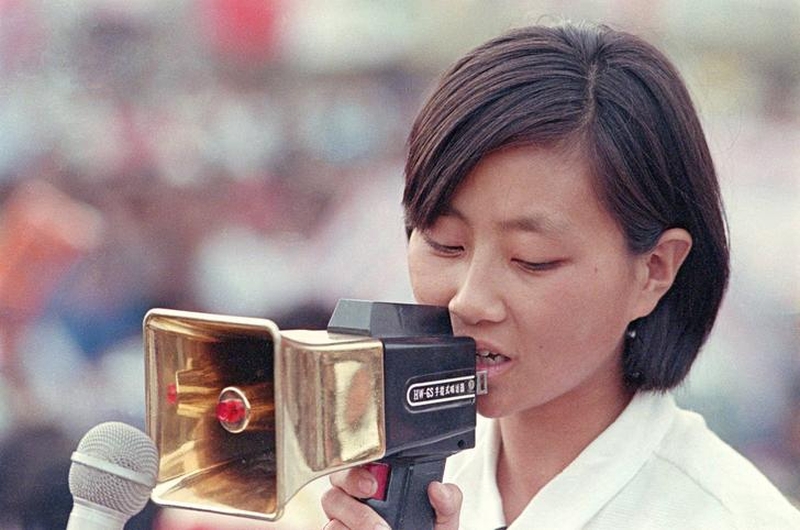 Before
the Tiananmen Square protests of 1989, the CCP was desperate
to quash what they saw as “bourgeois
liberalism,” a broad phrase suggesting several
kinds of
resistance to
the government’s strict and repressive political doctrine.
China’s educated youth were fed up with that very
repressiveness
as
well as the country’s wealth being funneled to corrupt
leaders at
the
top only for price inflations and poor job prospects to burden the
masses.
Hu Yaobang, a general secretary in the CCP since 1980, had been
encouraging the government to listen to its citizenry. He fought from
within to sway his peers into supporting democratic reforms and
providing the youth with more opportunities. By 1987, he was ousted,
and forced to resign. On April 15, 1989, he died — and became
an
immediate martyr to those
fighting for his cause. Tens of thousands of students organized a
protest at Tiananmen Square on the day of Hu’s funeral, April
22.
While
similar efforts were undertaken in cities across China,
Beijing’s
demonstration was the focal point of this national movement.
At the same time, countless journalists were in Beijing to report on
Soviet leader Mikhail Gorbachev’s arrival that May. Soon
after,
it was no longer just a student protest; the
number of protesters in Tiananmen Square reached 1 million —
and
garnered global media coverage.
Before
the Tiananmen Square protests of 1989, the CCP was desperate
to quash what they saw as “bourgeois
liberalism,” a broad phrase suggesting several
kinds of
resistance to
the government’s strict and repressive political doctrine.
China’s educated youth were fed up with that very
repressiveness
as
well as the country’s wealth being funneled to corrupt
leaders at
the
top only for price inflations and poor job prospects to burden the
masses.
Hu Yaobang, a general secretary in the CCP since 1980, had been
encouraging the government to listen to its citizenry. He fought from
within to sway his peers into supporting democratic reforms and
providing the youth with more opportunities. By 1987, he was ousted,
and forced to resign. On April 15, 1989, he died — and became
an
immediate martyr to those
fighting for his cause. Tens of thousands of students organized a
protest at Tiananmen Square on the day of Hu’s funeral, April
22.
While
similar efforts were undertaken in cities across China,
Beijing’s
demonstration was the focal point of this national movement.
At the same time, countless journalists were in Beijing to report on
Soviet leader Mikhail Gorbachev’s arrival that May. Soon
after,
it was no longer just a student protest; the
number of protesters in Tiananmen Square reached 1 million —
and
garnered global media coverage.
Beijing
Massacre — Slide 5
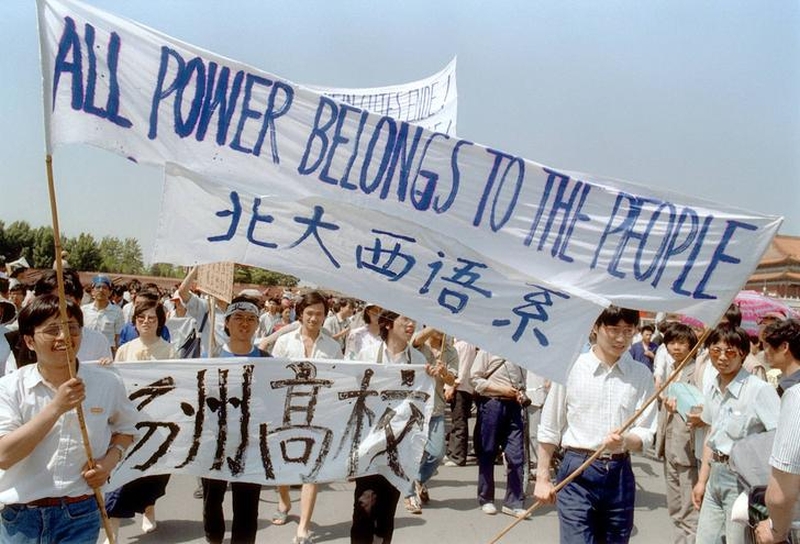 Waving
banners, high school students march in Beijing streets near
Tiananmen Square on May 25, 1989, during a rally to support the protest
against the Chinese government.
Waving
banners, high school students march in Beijing streets near
Tiananmen Square on May 25, 1989, during a rally to support the protest
against the Chinese government.
Beijing
Massacre — Slide 6
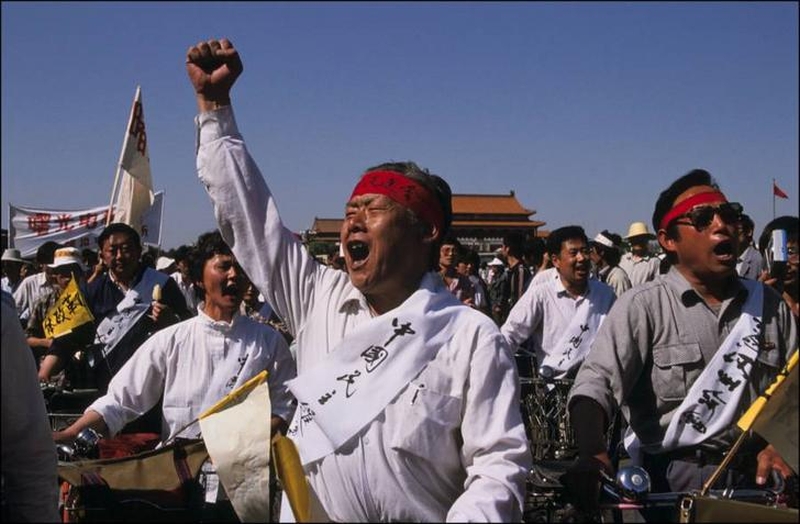 Regular
workers, regular people joined the protests. This picture was from May
24, 1989. Pilots had their banners. The army and navy were there.
Doctors and nurses waved their banners. Journalists had banners
promoting the right to tell the truth.
Regular
workers, regular people joined the protests. This picture was from May
24, 1989. Pilots had their banners. The army and navy were there.
Doctors and nurses waved their banners. Journalists had banners
promoting the right to tell the truth.
Beijing
Massacre — Slide 7
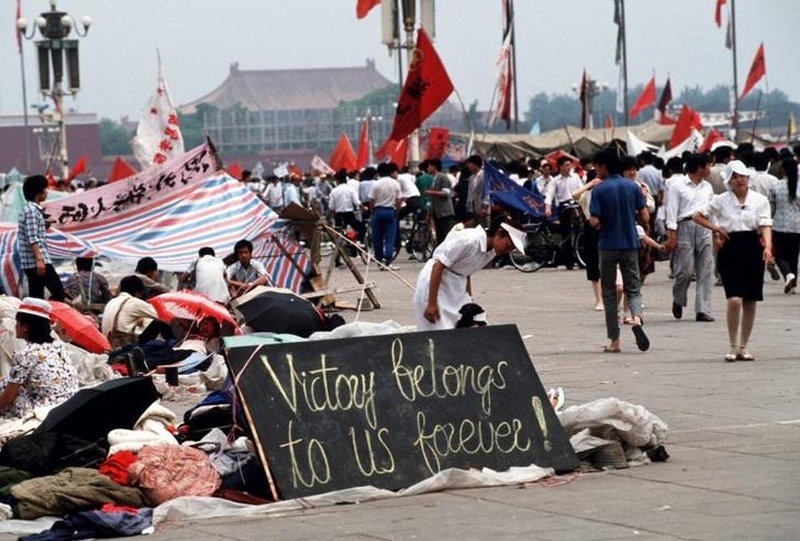 A
chalk board in Tiananmen Square declares, “Victory belongs to us forever!”
in English for the western journalists.
A
chalk board in Tiananmen Square declares, “Victory belongs to us forever!”
in English for the western journalists.
Beijing
Massacre — Slide 8
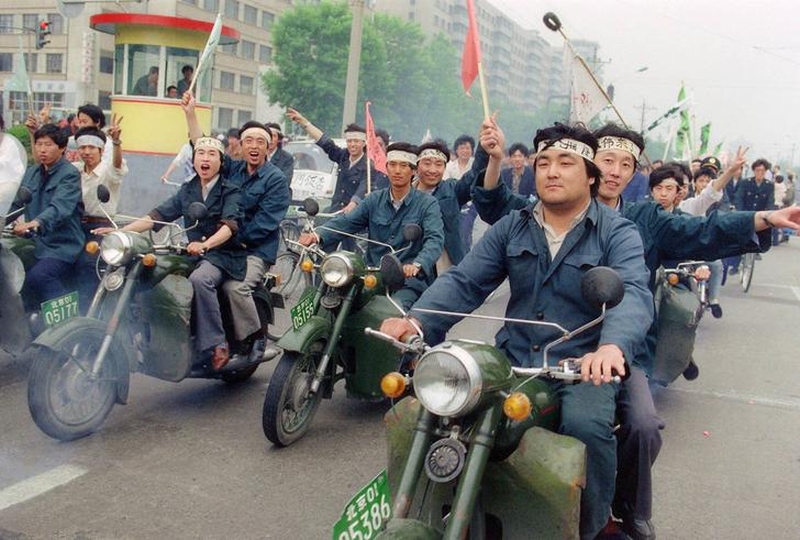 Riding
motorcycles and waving flags, Chinese workers parade through Beijing
streets on May 18, 1989, in support of student hunger strikers.
Riding
motorcycles and waving flags, Chinese workers parade through Beijing
streets on May 18, 1989, in support of student hunger strikers.
Beijing
Massacre — Slide 9
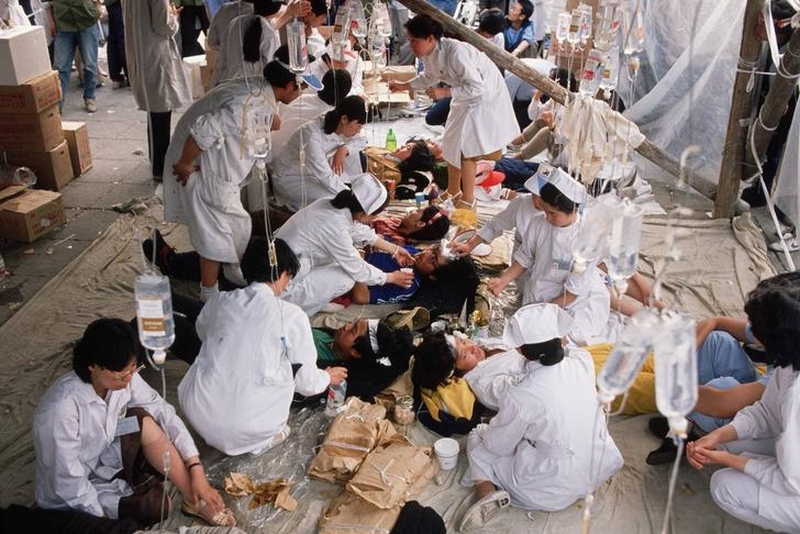 Students
from a Beijing nursing school attend to hunger strikers during the
protests.
Students
from a Beijing nursing school attend to hunger strikers during the
protests.
Beijing
Massacre — Slide 10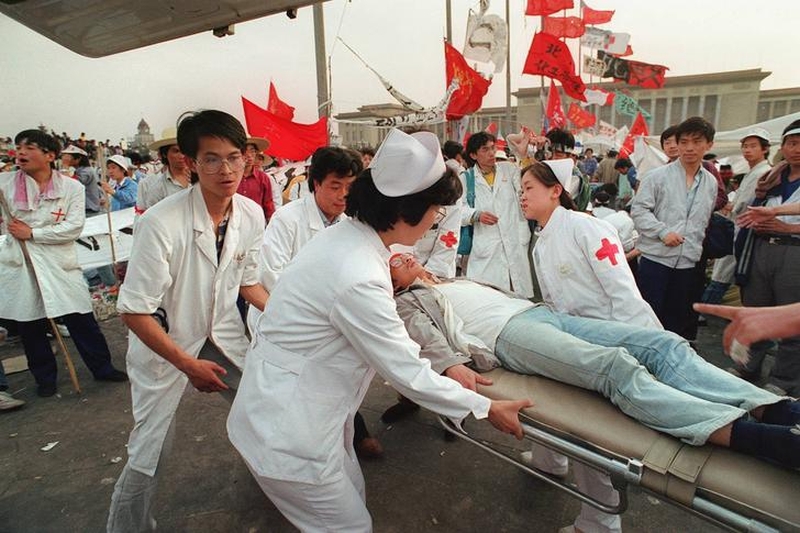 Paramedics
evacuate an ailing hunger striker from Beijing University at
Tiananmen Square, as students enter the fifth day of hunger strikes.
Paramedics
evacuate an ailing hunger striker from Beijing University at
Tiananmen Square, as students enter the fifth day of hunger strikes.
Beijing
Massacre — Slide 11
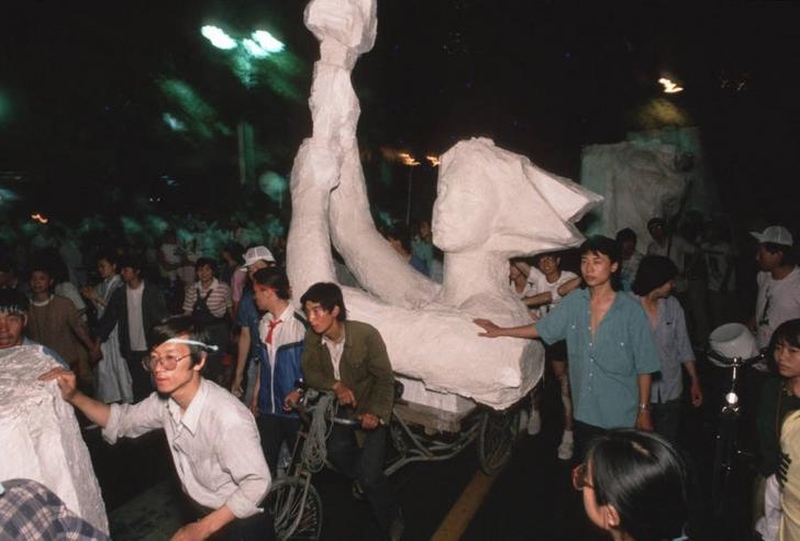 Demonstrators
cart the “Goddess of Democracy”
to Tiananmen Square on June 1st. The statue was loosely based
on the Statue of
Liberty to represent their desire for a more democratic rule in
Communist China. Once erected in Tiananmen Square, this proved to be
the last act of defiance by protesters before the massacre began.
Demonstrators
cart the “Goddess of Democracy”
to Tiananmen Square on June 1st. The statue was loosely based
on the Statue of
Liberty to represent their desire for a more democratic rule in
Communist China. Once erected in Tiananmen Square, this proved to be
the last act of defiance by protesters before the massacre began.
Beijing
Massacre — Slide 12
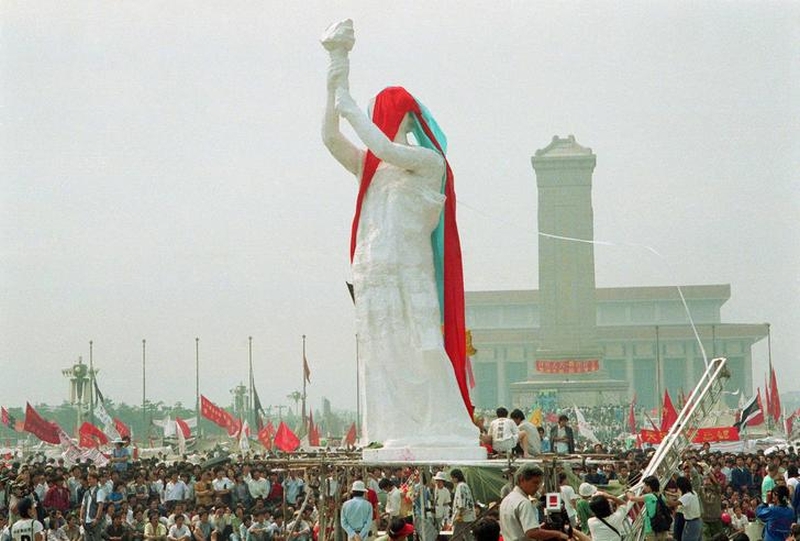 Crowds
of people watch the unveiling of the “Goddess of Democracy”
sculpture
in Tiananmen Square. Protesters usually topple statues. They usually
don't put new statues up.
Crowds
of people watch the unveiling of the “Goddess of Democracy”
sculpture
in Tiananmen Square. Protesters usually topple statues. They usually
don't put new statues up.
Beijing
Massacre — Slide 13
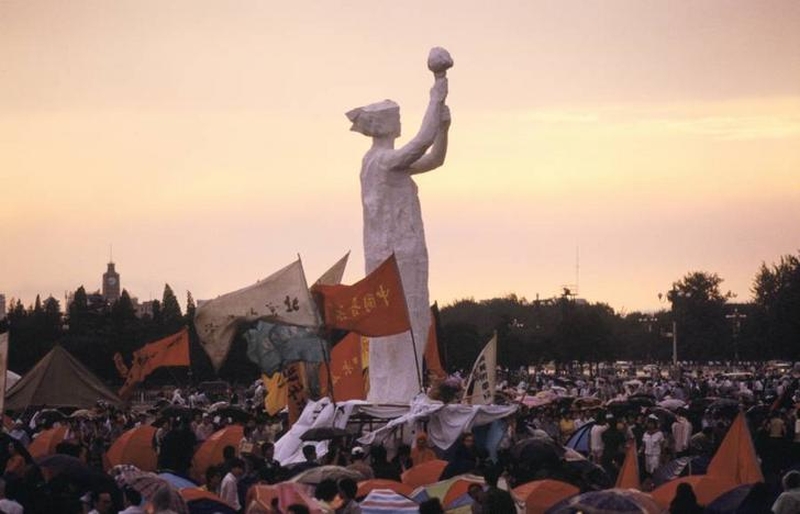 Banners
wave while the “Goddess of Democracy”
statue looks on. Is she holding ice cream? It looks like ice cream.
Banners
wave while the “Goddess of Democracy”
statue looks on. Is she holding ice cream? It looks like ice cream.
Beijing
Massacre — Slide 14
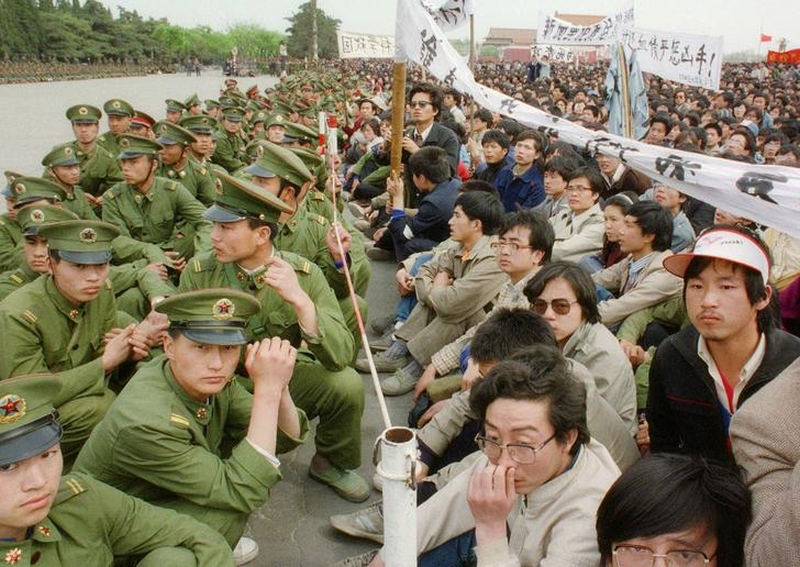 The
CCP declared martial law on May 20 and mobilized at least 30 People's
Army divisions from five of the country's seven military regions. As
many as 250,000 troops were eventually sent to Beijing. The army's
entry into the capitol was blocked in the suburbs by throngs of
protesters.
The
CCP declared martial law on May 20 and mobilized at least 30 People's
Army divisions from five of the country's seven military regions. As
many as 250,000 troops were eventually sent to Beijing. The army's
entry into the capitol was blocked in the suburbs by throngs of
protesters.
Beijing
Massacre — Slide 15 Tens
of thousands of demonstrators surrounded military vehicles, preventing
them from either advancing or retreating. PBS
Frontline 2410 - April 11, 2006 (transcript).
Tens
of thousands of demonstrators surrounded military vehicles, preventing
them from either advancing or retreating. PBS
Frontline 2410 - April 11, 2006 (transcript).
Beijing
Massacre — Slide 16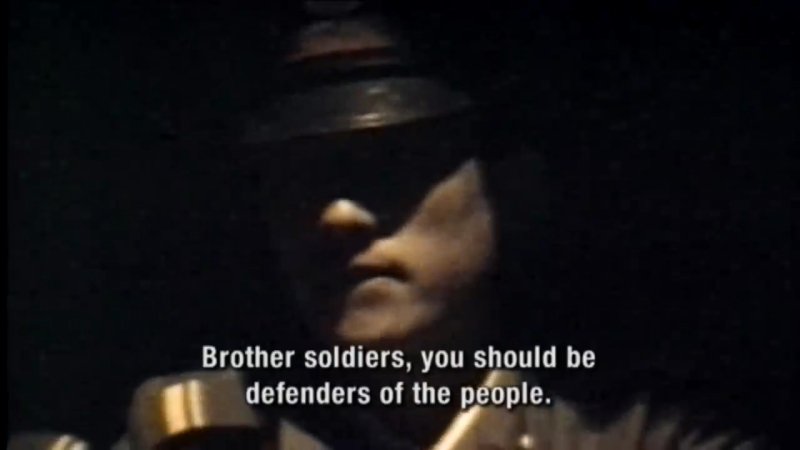 Local
residents lectured soldiers and appealed to them to join their cause.
They were asked why the People's Army should be attacking the people. “Brother soldiers, you should be
defenders of the people.” PBS
Frontline 2410 - April 11, 2006 (transcript).
Local
residents lectured soldiers and appealed to them to join their cause.
They were asked why the People's Army should be attacking the people. “Brother soldiers, you should be
defenders of the people.” PBS
Frontline 2410 - April 11, 2006 (transcript).
Beijing
Massacre — Slide 17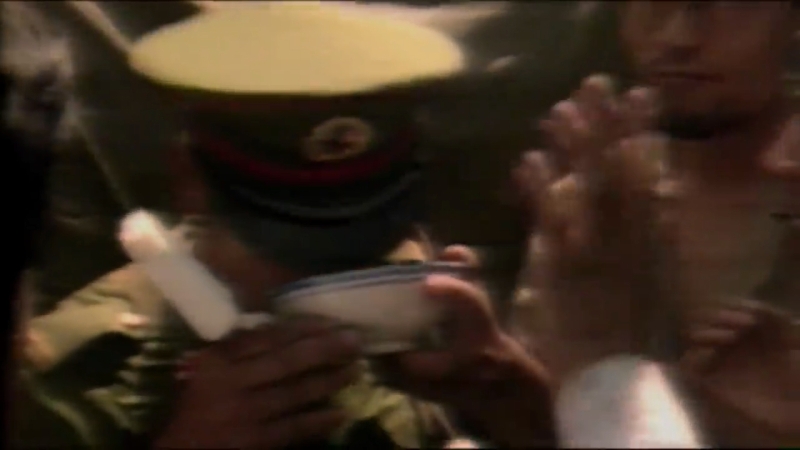 Locals
also provided soldiers with food, water, and shelter. And ice cream. From PBS
Frontline 2410 - April 11, 2006 (transcript).
Locals
also provided soldiers with food, water, and shelter. And ice cream. From PBS
Frontline 2410 - April 11, 2006 (transcript).
Beijing
Massacre — Slide 18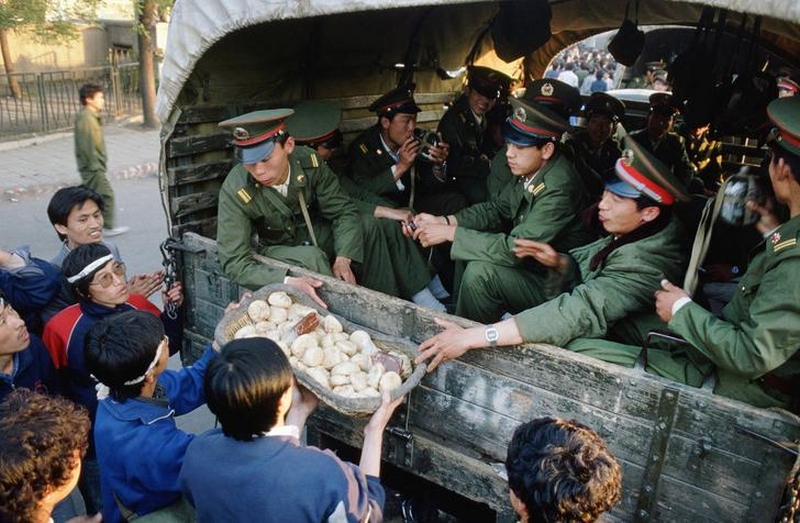 Beijing
residents provided soldiers with food, water, and shelter.
Beijing
residents provided soldiers with food, water, and shelter.
Beijing
Massacre — Slide 19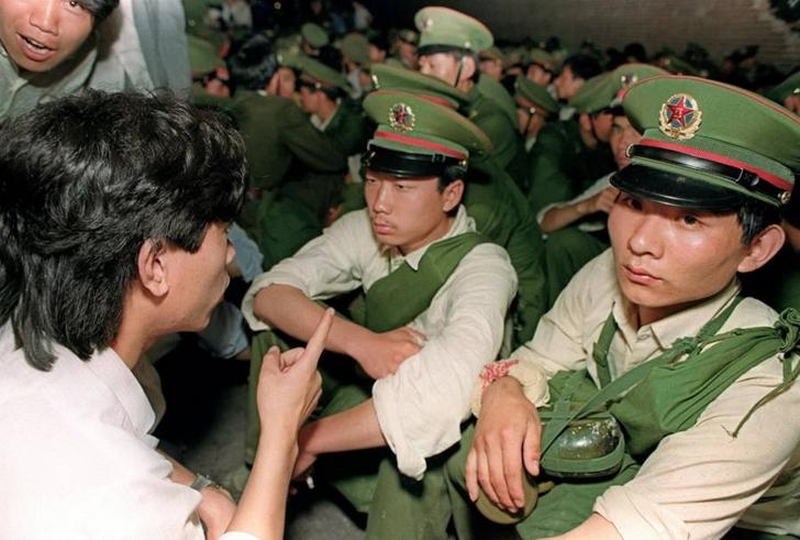 Seeing
no way forward, the CCP ordered the army to withdraw on May 24th,
regroup at bases outside the city,
and rearm (with AK-47s and type
56 rifles with bayonets).Beijing
Massacre — Slide 20
Seeing
no way forward, the CCP ordered the army to withdraw on May 24th,
regroup at bases outside the city,
and rearm (with AK-47s and type
56 rifles with bayonets).Beijing
Massacre — Slide 20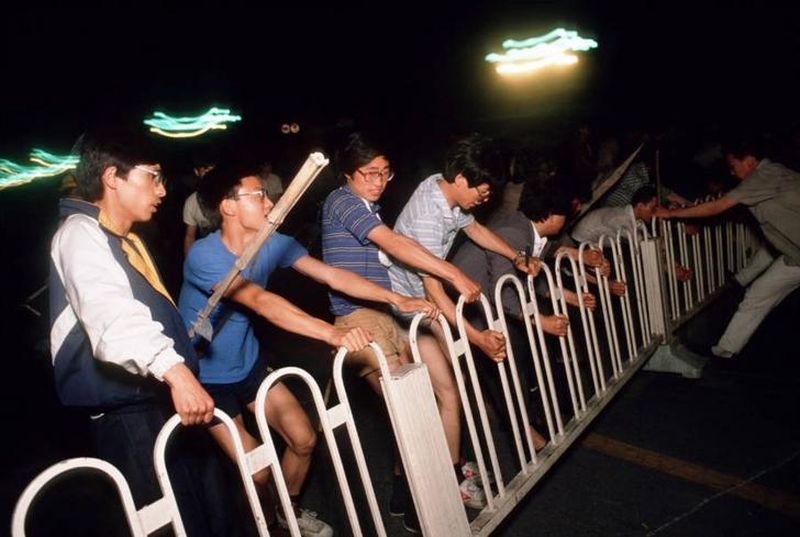 On
the fourth of June, just before the massacre,
pro-democracy reform demonstrators pulled barricades across Changan
Avenue in order to try and hold up People's Army soldiers fighting
their way towards Tiananmen Square.
On
the fourth of June, just before the massacre,
pro-democracy reform demonstrators pulled barricades across Changan
Avenue in order to try and hold up People's Army soldiers fighting
their way towards Tiananmen Square.
Beijing
Massacre — Slide 21 “Does this bus go to Tiananmen?”
Demonstrators overturn a bus in front of a
burning truck on Changan Avenue in order to try to hold up soldiers.
“Does this bus go to Tiananmen?”
Demonstrators overturn a bus in front of a
burning truck on Changan Avenue in order to try to hold up soldiers.
Beijing
Massacre — Slide 22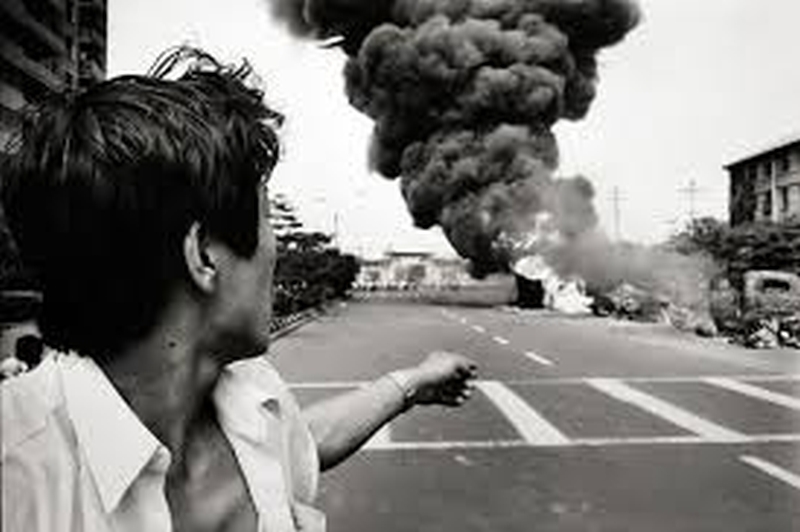
Beijing
Massacre — Slide 23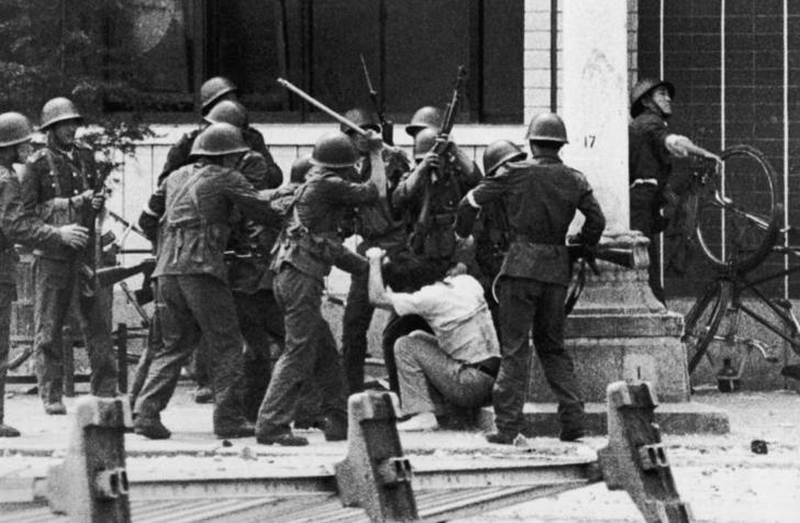 How
many People's Liberation Army (PLA) soldiers does it take to beat a man
and his bicycle?!? Obviously from the fourth of June 1989.
How
many People's Liberation Army (PLA) soldiers does it take to beat a man
and his bicycle?!? Obviously from the fourth of June 1989.
Beijing
Massacre — Slide 24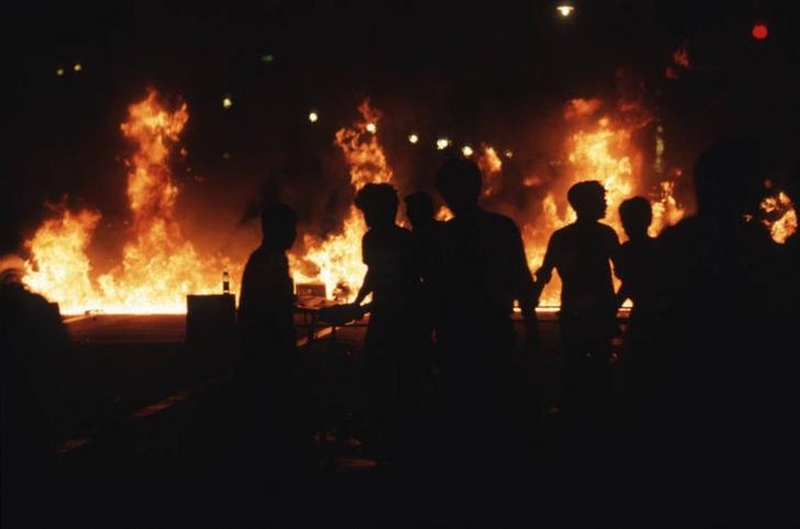 Buses
and vehicles burn as demonstrators retreat down Changan Avenue during
the Tiananmen Square massacre on the fourth of
June 1989.
Buses
and vehicles burn as demonstrators retreat down Changan Avenue during
the Tiananmen Square massacre on the fourth of
June 1989.
Beijing Massacre
— Slide 25 I'm
not showing this. What you are not seeing is a dead soldier with uh...
an open mind. On the fourth of June, the People's Army did not just
kill over 10,000 civilians. The People's Army also killed 27 of its own
soldiers. Judging from the reaction of some of the civilians, that may
have happened in the picture that would have been here. War is a
disgusting hell. I once played paintball and shot my own teammates. It
was ugly but nothing like this.
I'm
not showing this. What you are not seeing is a dead soldier with uh...
an open mind. On the fourth of June, the People's Army did not just
kill over 10,000 civilians. The People's Army also killed 27 of its own
soldiers. Judging from the reaction of some of the civilians, that may
have happened in the picture that would have been here. War is a
disgusting hell. I once played paintball and shot my own teammates. It
was ugly but nothing like this.
Beijing
Massacre — Slide 26 What
you don't see here is another picture of a thoroughly dead soldier. The
number of different ways this soldier was killed (hanged, gutless,
burned, impaled) screams out that this was the PLA at play. He had to be one
of the 27.
What
you don't see here is another picture of a thoroughly dead soldier. The
number of different ways this soldier was killed (hanged, gutless,
burned, impaled) screams out that this was the PLA at play. He had to be one
of the 27.
Beijing
Massacre — Slide 27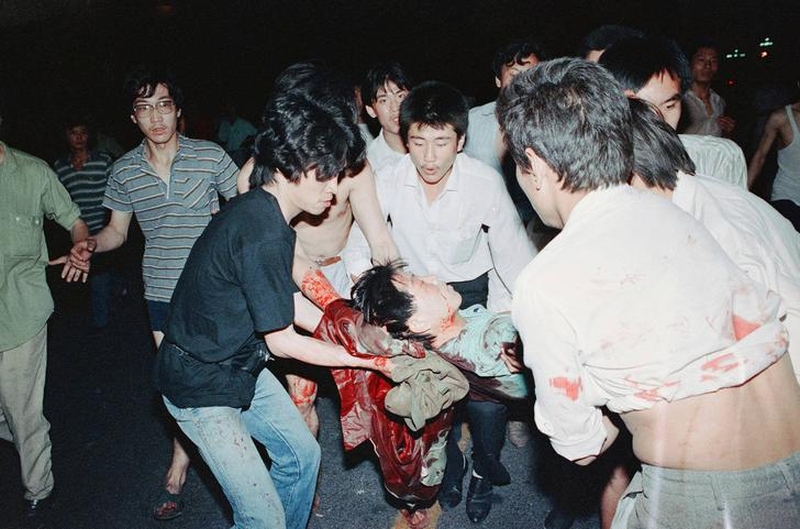 A wounded protester is carried away.
A wounded protester is carried away.
Beijing
Massacre — Slide 28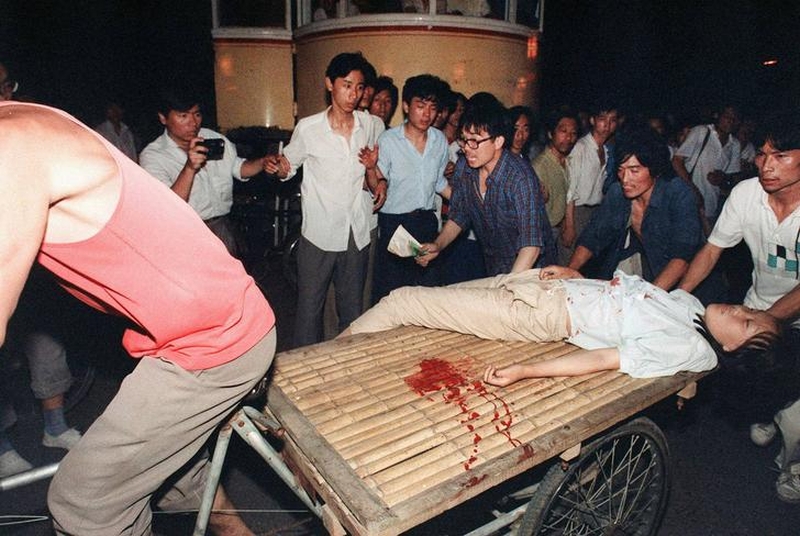 A wounded protester is carted away.
A wounded protester is carted away.
Beijing Massacre
— Slide 29 What
I'm
not showing here is a large pile of bodies in a corner of the Capitol
hospital. This photo that is not shown is credited to Dario Mitidien
and Getty Images.
What
I'm
not showing here is a large pile of bodies in a corner of the Capitol
hospital. This photo that is not shown is credited to Dario Mitidien
and Getty Images.
Beijing Massacre
— Slide 30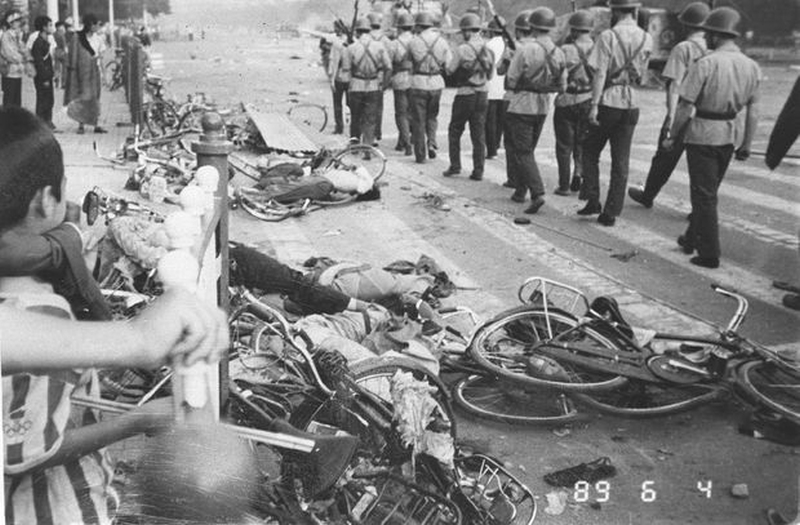 Bodies and bikes litter the streets of Beijing on the fourth of June 1989.
Bodies and bikes litter the streets of Beijing on the fourth of June 1989.
Beijing Massacre
— Slide 31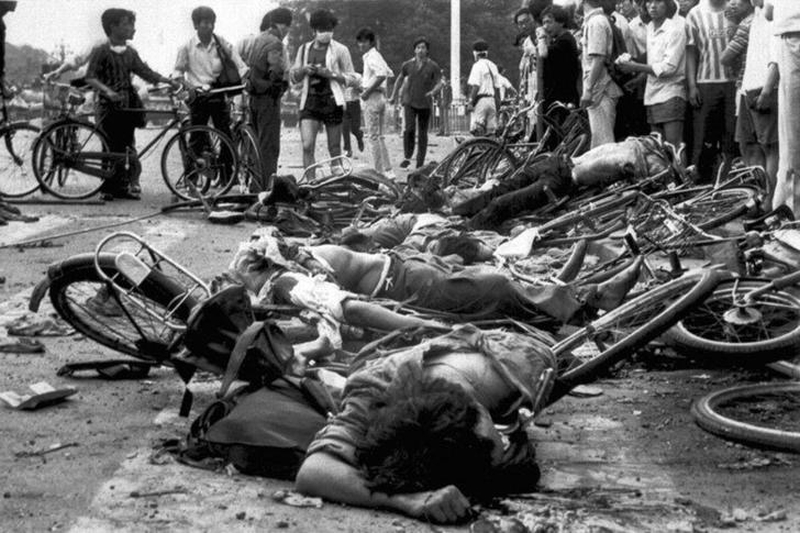 More bodies and bikes litter the streets of Beijing on the fourth of June 1989.
More bodies and bikes litter the streets of Beijing on the fourth of June 1989.
Beijing Massacre
— Slide 32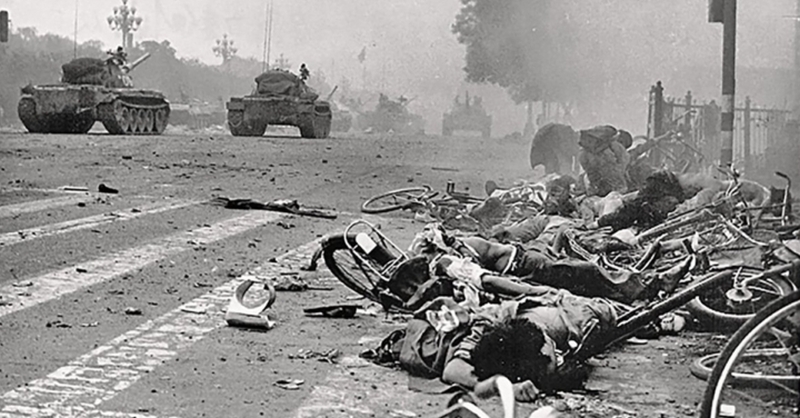 Still more bodies and bikes litter the streets of Beijing on the fourth of June 1989.
Still more bodies and bikes litter the streets of Beijing on the fourth of June 1989.
Beijing Massacre
— Slide 33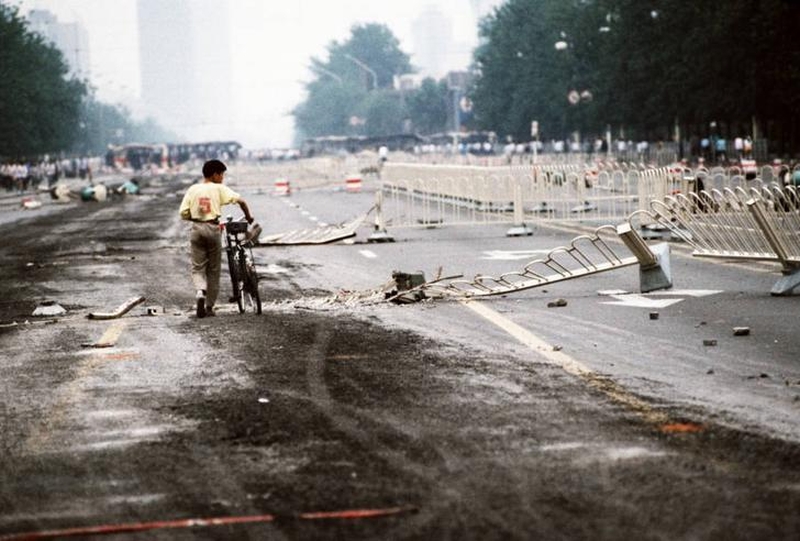 Barriers, buses, and destruction litter the streets.
Barriers, buses, and destruction litter the streets.
Beijing Massacre
— Slide 34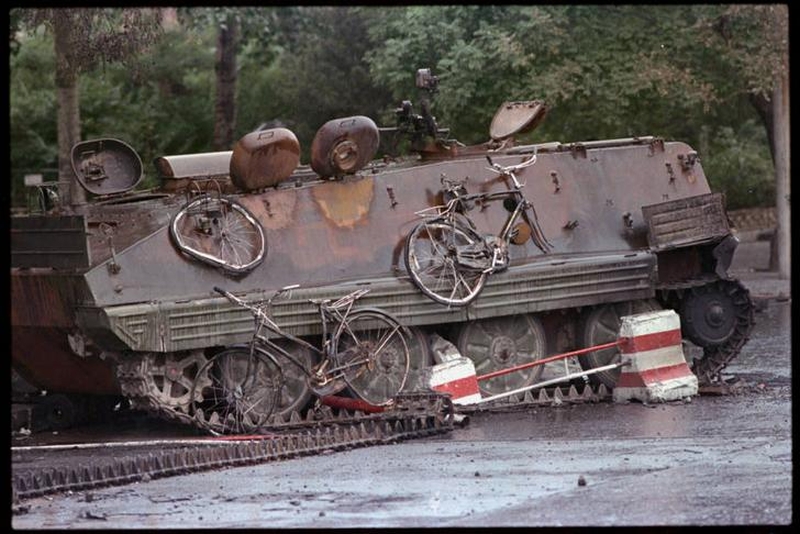 An armored personnel carrier with flattened bicycles stuck to its side, near Tiananmen Square on June 4th.
An armored personnel carrier with flattened bicycles stuck to its side, near Tiananmen Square on June 4th.
Beijing Massacre
— Slide 35 Bicycles flattened by tanks.
Bicycles flattened by tanks.
Beijing Massacre
— Slide 36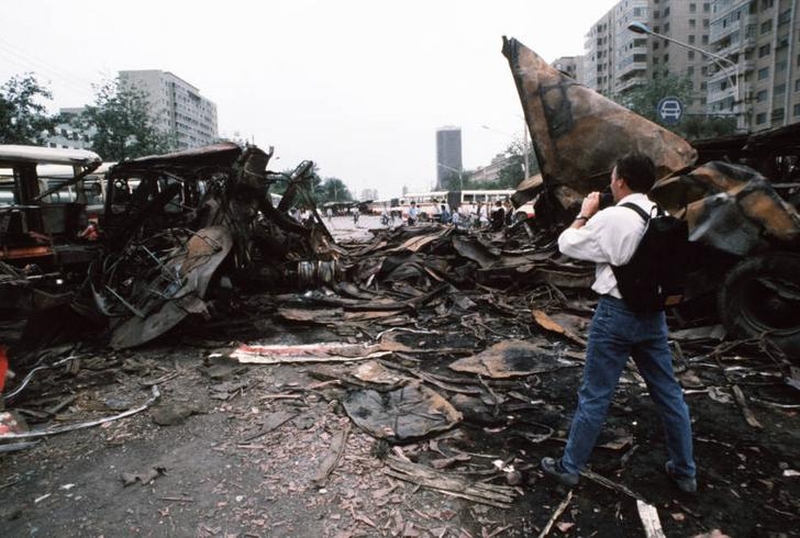 Buses flattened by tanks.
Buses flattened by tanks.
Beijing Massacre
— Slide 37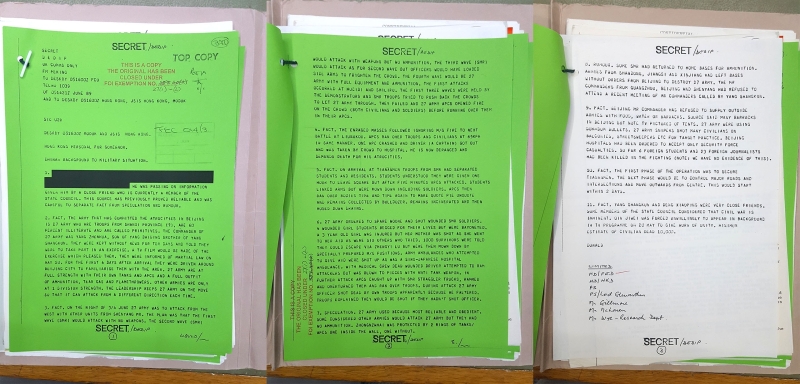 Previously
secret cable from Sir Alan Donald (then British ambassador to China)
from June 5, 1989 described the events of the previous 2 days.
“The atrocities against thousands of pro-democracy protesters in and
around Beijing’s Tiananmen Square had been coordinated by the 27 Army
of Shanxi Province. The 27 Army APCs [armored personnel carriers]
opened fire on the crowd before running over them. APCs ran over troops
and civilians at 65kph [40 miles per hour]. The bodies were
[repeatedly] run over... and remains collected by bulldozer.”
Previously
secret cable from Sir Alan Donald (then British ambassador to China)
from June 5, 1989 described the events of the previous 2 days.
“The atrocities against thousands of pro-democracy protesters in and
around Beijing’s Tiananmen Square had been coordinated by the 27 Army
of Shanxi Province. The 27 Army APCs [armored personnel carriers]
opened fire on the crowd before running over them. APCs ran over troops
and civilians at 65kph [40 miles per hour]. The bodies were
[repeatedly] run over... and remains collected by bulldozer.”
Tiananmen Man
— Tank Man — Slide 38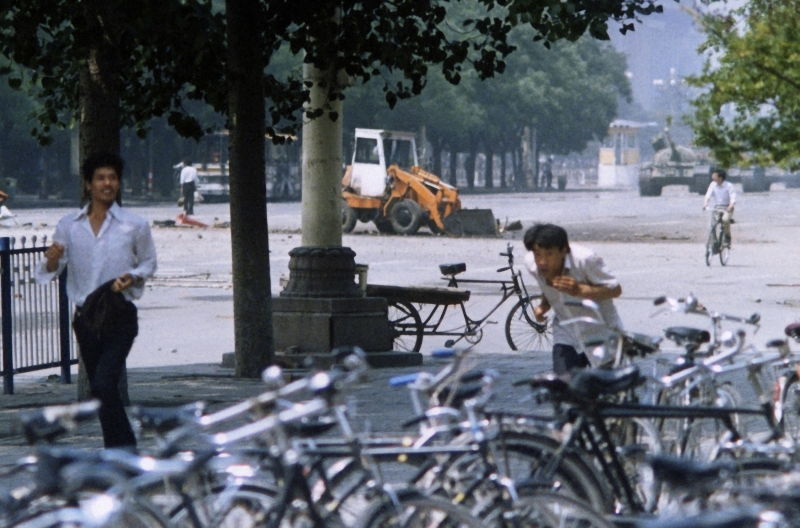
This photo of Tank Man
near Tiananmen Square on the fifth of June 1989 was taken by Associated
Press photographer Terril Jones using a Nikon F-801 SLR camera. Tank
Man is the fourth smallest man in the picture near the bus on the left.
The bicyclist may be the same bicyclist that rode over to Tank Man
after the confrontation with the tanks. This is a great picture, only
revealed to the world in 2009.
Tiananmen Man
— Tank Man — Slide 39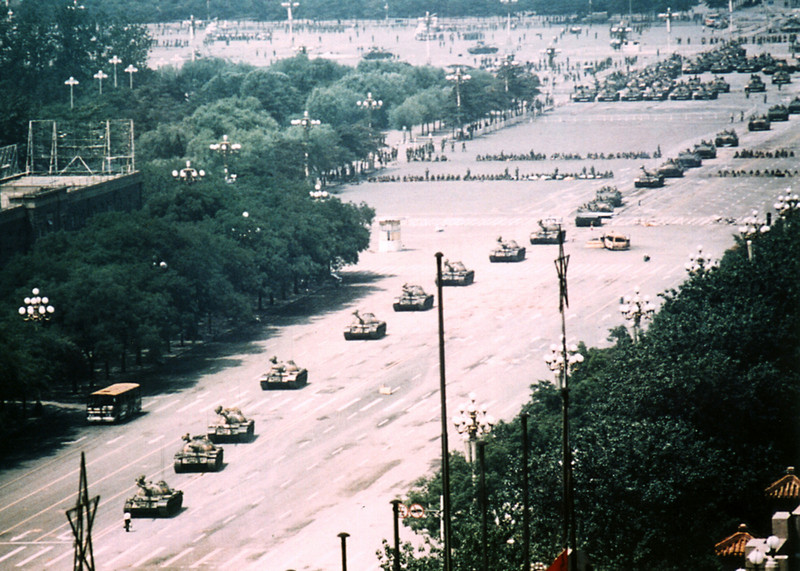
This photo of Tank Man near Tiananmen Square on the fifth of June 1989 was taken by Stuart Franklin and gives a sense of scale to this lone man defiantly stopping a column of tanks after all the events of the preceding weeks.
Tiananmen Man
— Tank Man — Slide 40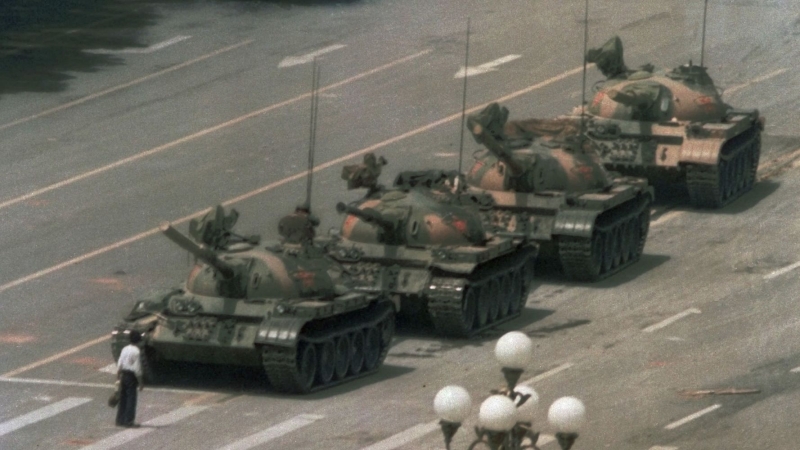
This photo of Tank Man near Tiananmen Square on the fifth of June 1989 was taken by Jeff Widener
AP, from a sixth-floor balcony of the Beijing Hotel, using a Nikon
FE2 camera through a Nikkor 400mm 5.6 ED-IF lens and TC-301
teleconverter. Or else it was taken by Charlie Cole AP, who was also photographing from a balcony of the Beijing Hotel. I'm not certain.
The story of Tank Man
is a short story. You don't have to sit down for this one. After the
horrendous massacre of over 10,000 people in Beijing in June of 1989,
an unknown man was crossing Changan Avenue with his jacket and a white
plastic bag of groceries. He sees more than a dozen type-59 tanks
coming down the wide road. He stops in front of them. They stop in
front of him. He yells at the front tank. He waves his arms. They move
to go around him. He gets back in their way. The tank shuts off its
engine. He continues to yell at them. He climbs the tank and yells at
them. He climbs down the side. They start back up. He gets back in
their way. People come and escort him away. (Tank Man video by CNN)
The defiance.
The strength of character.
The will to say, “Enough is enough.”
Great.
Music Association: Staind - So
Far Away
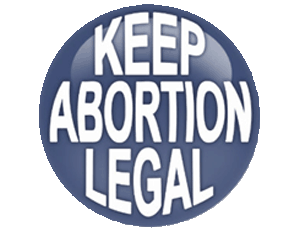 Abortion
Abortion Russia - Ukraine War
Russia - Ukraine War
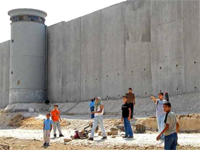
end Israeli apartheid
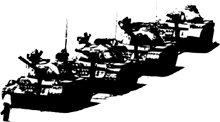 China in 1989
China in 1989

George
Floyd
 Covid-19
Covid-19 Trump
Timeline (PDF)
Trump
Timeline (PDF)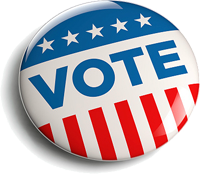 Voter
Suppression
Voter
Suppression
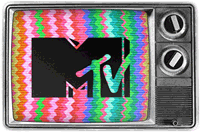 Music
Videos
Music
Videos Landmine
Hopscotch
Landmine
Hopscotch Superman
Superman Impact
Investing
Impact
Investing Holiday
Gifs of Cats and Kittens Part 1
Part 2
Part
3 Part
4 Part
5
Holiday
Gifs of Cats and Kittens Part 1
Part 2
Part
3 Part
4 Part
5
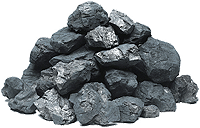
 Southdale
Hennepin Library Edina
Library
Southdale
Hennepin Library Edina
Library  Wonder
Woman
Wonder
Woman Food
Fraud
Food
Fraud 

























































